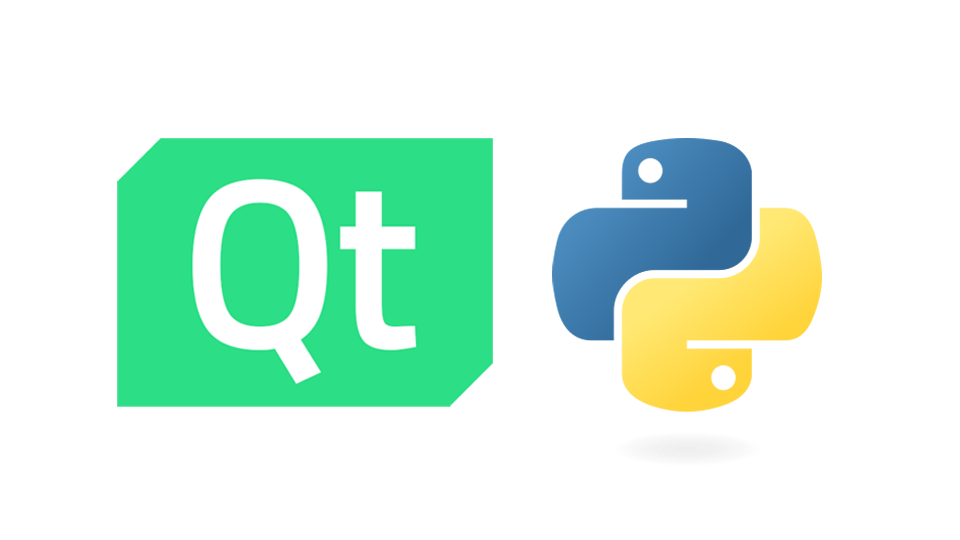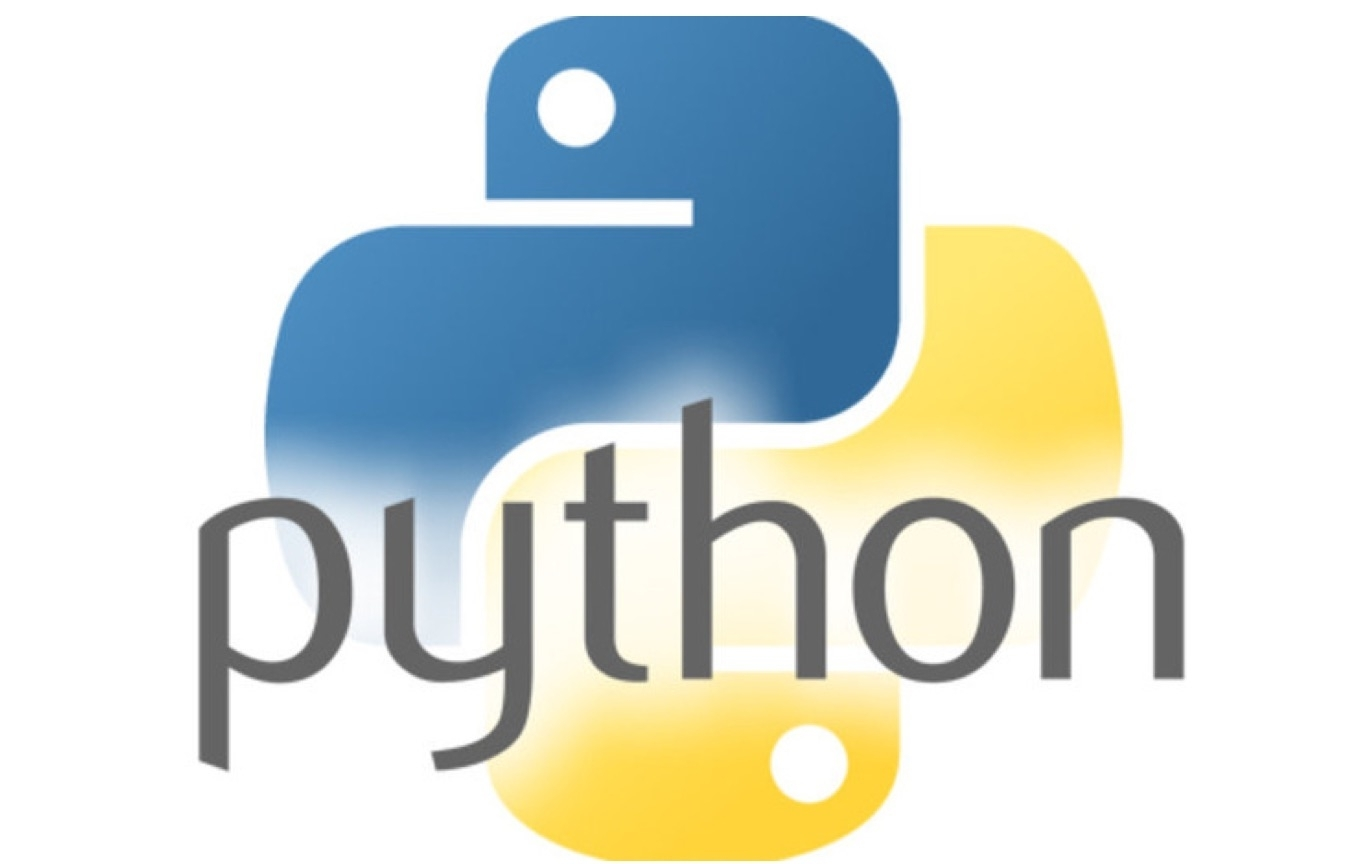搜索到
4
篇与
的结果
-
 VSCode配置PyQt5 Designer 开发环境 1 vscode 安装 python扩展包配置Python解释器安装pyqt integration扩展配置pyqt integration2.1 进入配置界面如图所示进入设置, 选择Extension Settings然后在里面根据自己安装的pyqt5-tools, 把Designer设计器路径填上去。Ubuntu 系统一般在venv的lib下面。lib/python3.8/site-packages/qt5_applications/Qt/bin/designer最后可以在资源管理器的空白处右键就可以选择pyqt form了。设计之后的python选择,点击右键,选择Run current File in interactive Windows。
VSCode配置PyQt5 Designer 开发环境 1 vscode 安装 python扩展包配置Python解释器安装pyqt integration扩展配置pyqt integration2.1 进入配置界面如图所示进入设置, 选择Extension Settings然后在里面根据自己安装的pyqt5-tools, 把Designer设计器路径填上去。Ubuntu 系统一般在venv的lib下面。lib/python3.8/site-packages/qt5_applications/Qt/bin/designer最后可以在资源管理器的空白处右键就可以选择pyqt form了。设计之后的python选择,点击右键,选择Run current File in interactive Windows。 -

-
 Python 如何将PyQt脚本(.py)编译成独立的可执行文件在Windows(.exe)和Linux上 Python 如何将PyQt脚本(.py)编译成独立的可执行文件在Windows(.exe)和Linux上在Windows系统上编译PyQt脚本为可执行文件在Windows系统上,我们可以使用PyInstaller这个工具来编译PyQt脚本为可执行文件。PyInstaller是一个自包含(stand-alone)的Python应用程序构建打包工具,它能够将Python脚本及其所依赖的库打包成一个独立的可执行文件。首先,我们需要安装PyInstaller。可以使用以下命令在命令行中安装:pip install pyinstaller国内的源:所以,我决定整合一哈国内镜像源的PyInstaller模块代码,方便以后自己复制使用pip3 install -i https://pypi.tuna.tsinghua.edu.cn/simple pyinstaller安装完成后,我们可以使用以下命令将PyQt脚本编译成可执行文件:pyinstaller --onefile YourScript.py其中,”YourScript.py”是你要编译的PyQt脚本的文件名。编译完成后,会在当前目录下生成一个可执行文件。在Linux系统上编译PyQt脚本为可执行文件在Linux系统上,我们可以使用PyInstaller或者cx_Freeze这两个工具来编译PyQt脚本为可执行文件。这两个工具的用法类似,在这里我们以PyInstaller为例进行介绍。首先,我们同样需要先安装PyInstaller。可以使用以下命令在命令行中安装:pip install pyinstaller安装完成后,我们可以使用以下命令将PyQt脚本编译成可执行文件:pyinstaller --onefile YourScript.py其中,”YourScript.py”是你要编译的PyQt脚本的文件名。编译完成后,同样会在当前目录下生成一个可执行文件。其他注意事项在编译PyQt脚本为可执行文件时,需要注意以下几点:确保你的脚本中所有依赖的库都已经安装。如果你的脚本中有使用到其他的资源文件,如图片、字体等,需要将这些资源文件一同放置在同一个目录下,以便可执行文件正确加载。在编译可执行文件时,PyInstaller或cx_Freeze会将所依赖的库一同打包进可执行文件中,因此可执行文件可能会比较大。如果想减小可执行文件的大小,可以尝试使用--noconsole参数去掉控制台的输出(仅限Windows系统),或者使用--onefile参数生成单个可执行文件。总结通过本文我们了解了如何将PyQt脚本编译成独立的可执行文件,在Windows和Linux系统上都有相应的工具可以使用。在实际开发过程中,我们可以根据自己的实际需求选择合适的工具来进行编译和打包。使用PyInstaller或cx_Freeze等工具,我们可以方便地将PyQt程序转化为可执行文件,并且在其他平台上进行部署和分发。这将极大地方便用户的使用,同时保护了源码的安全性。希望本文可以对你在编译PyQt脚本方面有所帮助。
Python 如何将PyQt脚本(.py)编译成独立的可执行文件在Windows(.exe)和Linux上 Python 如何将PyQt脚本(.py)编译成独立的可执行文件在Windows(.exe)和Linux上在Windows系统上编译PyQt脚本为可执行文件在Windows系统上,我们可以使用PyInstaller这个工具来编译PyQt脚本为可执行文件。PyInstaller是一个自包含(stand-alone)的Python应用程序构建打包工具,它能够将Python脚本及其所依赖的库打包成一个独立的可执行文件。首先,我们需要安装PyInstaller。可以使用以下命令在命令行中安装:pip install pyinstaller国内的源:所以,我决定整合一哈国内镜像源的PyInstaller模块代码,方便以后自己复制使用pip3 install -i https://pypi.tuna.tsinghua.edu.cn/simple pyinstaller安装完成后,我们可以使用以下命令将PyQt脚本编译成可执行文件:pyinstaller --onefile YourScript.py其中,”YourScript.py”是你要编译的PyQt脚本的文件名。编译完成后,会在当前目录下生成一个可执行文件。在Linux系统上编译PyQt脚本为可执行文件在Linux系统上,我们可以使用PyInstaller或者cx_Freeze这两个工具来编译PyQt脚本为可执行文件。这两个工具的用法类似,在这里我们以PyInstaller为例进行介绍。首先,我们同样需要先安装PyInstaller。可以使用以下命令在命令行中安装:pip install pyinstaller安装完成后,我们可以使用以下命令将PyQt脚本编译成可执行文件:pyinstaller --onefile YourScript.py其中,”YourScript.py”是你要编译的PyQt脚本的文件名。编译完成后,同样会在当前目录下生成一个可执行文件。其他注意事项在编译PyQt脚本为可执行文件时,需要注意以下几点:确保你的脚本中所有依赖的库都已经安装。如果你的脚本中有使用到其他的资源文件,如图片、字体等,需要将这些资源文件一同放置在同一个目录下,以便可执行文件正确加载。在编译可执行文件时,PyInstaller或cx_Freeze会将所依赖的库一同打包进可执行文件中,因此可执行文件可能会比较大。如果想减小可执行文件的大小,可以尝试使用--noconsole参数去掉控制台的输出(仅限Windows系统),或者使用--onefile参数生成单个可执行文件。总结通过本文我们了解了如何将PyQt脚本编译成独立的可执行文件,在Windows和Linux系统上都有相应的工具可以使用。在实际开发过程中,我们可以根据自己的实际需求选择合适的工具来进行编译和打包。使用PyInstaller或cx_Freeze等工具,我们可以方便地将PyQt程序转化为可执行文件,并且在其他平台上进行部署和分发。这将极大地方便用户的使用,同时保护了源码的安全性。希望本文可以对你在编译PyQt脚本方面有所帮助。 -
![PyQt5应用实例]获取城市天气预报]((http://www.bennyhe.cn/usr/uploads/2025/06/1063405745.jpg) PyQt5应用实例]获取城市天气预报 目录一、获取天气数据二、获取不同城市的天气预报API三、界面实现四、将界面文件转换为.py文件五、调用主窗口类六、使用PyInstaller打包项目生成EXE文件一、获取天气数据使用Python获取天气数据有两种方法:1、通过爬虫的方式,获取天气预报网站的HTML页面,然后使用XPath或BeautifulSoup解析HTML页面的内容;2、通过天气预报网站提供的API,直接获取结构化数据,省去了解析HTML页面这一步。本例使用中国天气网站提供的API,中国天气官网地址:http://www.weather.com.cn。获取天气数据使用的是Requests库,它是使用Python语言基于urllib编写的HTTP库,需要使用pip命令进行安装。pip install requestsRequests库包含一个名为json的方法,当请求的地址返回的是JSON格式的数据时,直接使用该方法访问即可,而不需要再使用Python标准库中的json库。二、获取不同城市的天气预报API请求地址是:http://www.weather.com.cn/data/sk/城市代码.html,部分城市代码:北京 101010100,上海 101020100,完整的城市代码可在网上搜索到(全国各个城市代码)。返回参数如下表所示。名称 描述weatherinfo weatherInfo消息根节点city 城市中文名cityid 城市IDtemp 温度WD 风向WS 风力SD 湿度WSE 风力time 发布时间rain 是否下雨,1:有雨,0:无雨isRadar 是否有雷达图,1:有雷达图,0:没有雷达图Radar 雷达图编号,雷达图地址:http://www.weather.com.cn/html/radar/雷达图编号.shtml测试代码:import requests if __name__ == "__main__": rep = requests.get("http://www.weather.com.cn/data/sk/101020100.html") rep.encoding = "utf-8" print("Result: %s" % rep.json()) print("City: %s" % rep.json()["weatherinfo"]["city"]) print("Wind Direction: %s" % rep.json()["weatherinfo"]["WD"]) print("Temperature: %s" % rep.json()["weatherinfo"]["temp"] + " °C") print("Wind Strength: %s" % rep.json()["weatherinfo"]["WS"]) print("Humidity: %s" % rep.json()["weatherinfo"]["SD"])输出结果:Result: {'weatherinfo': {'city': '上海', 'cityid': '101020100', 'temp': '23.5', 'WD': '东北风', 'WS': '小于3级', 'SD': '80%', 'AP': '1006.4hPa', 'njd': '2903', 'WSE': '<3', 'time': '17:00', 'sm': '1.1', 'isRadar': '1', 'Radar': 'JC_RADAR_AZ9210_JB'}}City: 上海Wind Direction: 东北风Temperature: 23.5 °CWind Strength: 小于3级Humidity: 80%查询天气的业务逻辑代码调试成功。三、界面实现使用Qt Designer来设计天气预报窗口,如下图所示:WeatherWin.ui代码:<?xml version="1.0" encoding="UTF-8"?> <ui version="4.0"> <class>Form</class> <widget class="QWidget" name="Form"> <property name="geometry"> <rect> <x>0</x> <y>0</y> <width>450</width> <height>347</height> </rect> </property> <property name="windowTitle"> <string>Form</string> </property> <widget class="QGroupBox" name="groupBox"> <property name="geometry"> <rect> <x>10</x> <y>10</y> <width>431</width> <height>251</height> </rect> </property> <property name="title"> <string>查询城市天气</string> </property> <widget class="QComboBox" name="weatherComboBox"> <property name="geometry"> <rect> <x>80</x> <y>30</y> <width>221</width> <height>21</height> </rect> </property> <item> <property name="text"> <string>北京</string> </property> </item> <item> <property name="text"> <string>天津</string> </property> </item> <item> <property name="text"> <string>上海</string> </property> </item> </widget> <widget class="QTextEdit" name="resultText"> <property name="geometry"> <rect> <x>10</x> <y>60</y> <width>411</width> <height>181</height> </rect> </property> </widget> <widget class="QLabel" name="label"> <property name="geometry"> <rect> <x>20</x> <y>30</y> <width>72</width> <height>21</height> </rect> </property> <property name="text"> <string>城市</string> </property> </widget> </widget> <widget class="QPushButton" name="queryBtn"> <property name="geometry"> <rect> <x>90</x> <y>300</y> <width>93</width> <height>28</height> </rect> </property> <property name="text"> <string>查询</string> </property> </widget> <widget class="QPushButton" name="clearBtn"> <property name="geometry"> <rect> <x>230</x> <y>300</y> <width>93</width> <height>28</height> </rect> </property> <property name="text"> <string>清空</string> </property> </widget> </widget> <resources/> <connections> <connection> <sender>clearBtn</sender> <signal>clicked()</signal> <receiver>Form</receiver> <slot>clearResult()</slot> <hints> <hint type="sourcelabel"> <x>270</x> <y>314</y> </hint> <hint type="destinationlabel"> <x>363</x> <y>288</y> </hint> </hints> </connection> <connection> <sender>queryBtn</sender> <signal>clicked()</signal> <receiver>Form</receiver> <slot>queryWeather()</slot> <hints> <hint type="sourcelabel"> <x>161</x> <y>313</y> </hint> <hint type="destinationlabel"> <x>64</x> <y>286</y> </hint> </hints> </connection> </connections> <slots> <slot>clearResult()</slot> <slot>queryWeather()</slot> </slots> </ui>控件说明如下表所示:四、将界面文件转换为.py文件使用pyuic5命令将界面文件转换成.py文件,转换后的Python文件名是WeatherWin.py。pyuic5 -o WeatherWin.py WeatherWin.ui转换后的WeatherWin.py完整代码如下:# -*- coding: utf-8 -*- # Form implementation generated from reading ui file 'weather.ui' # # Created by: PyQt5 UI code generator 5.15.4 # # WARNING: Any manual changes made to this file will be lost when pyuic5 is # run again. Do not edit this file unless you know what you are doing. from PyQt5 import QtCore, QtGui, QtWidgets class Ui_Form(object): def setupUi(self, Form): Form.setObjectName("Form") Form.resize(450, 347) self.groupBox = QtWidgets.QGroupBox(Form) self.groupBox.setGeometry(QtCore.QRect(10, 10, 431, 251)) self.groupBox.setObjectName("groupBox") self.weatherComboBox = QtWidgets.QComboBox(self.groupBox) self.weatherComboBox.setGeometry(QtCore.QRect(80, 30, 221, 21)) self.weatherComboBox.setObjectName("weatherComboBox") self.weatherComboBox.addItem("") self.weatherComboBox.addItem("") self.weatherComboBox.addItem("") self.resultText = QtWidgets.QTextEdit(self.groupBox) self.resultText.setGeometry(QtCore.QRect(10, 60, 411, 181)) self.resultText.setObjectName("resultText") self.label = QtWidgets.QLabel(self.groupBox) self.label.setGeometry(QtCore.QRect(20, 30, 72, 21)) self.label.setObjectName("label") self.queryBtn = QtWidgets.QPushButton(Form) self.queryBtn.setGeometry(QtCore.QRect(90, 300, 93, 28)) self.queryBtn.setObjectName("queryBtn") self.clearBtn = QtWidgets.QPushButton(Form) self.clearBtn.setGeometry(QtCore.QRect(230, 300, 93, 28)) self.clearBtn.setObjectName("clearBtn") self.retranslateUi(Form) self.clearBtn.clicked.connect(Form.clearResult) self.queryBtn.clicked.connect(Form.queryWeather) QtCore.QMetaObject.connectSlotsByName(Form) def retranslateUi(self, Form): _translate = QtCore.QCoreApplication.translate Form.setWindowTitle(_translate("Form", "Form")) self.groupBox.setTitle(_translate("Form", "查询城市天气")) self.weatherComboBox.setItemText(0, _translate("Form", "北京")) self.weatherComboBox.setItemText(1, _translate("Form", "天津")) self.weatherComboBox.setItemText(2, _translate("Form", "上海")) self.label.setText(_translate("Form", "城市")) self.queryBtn.setText(_translate("Form", "查询")) self.clearBtn.setText(_translate("Form", "清空")).五、调用主窗口类在主窗口类MainWindow中调用界面类Ui_Form,然后在主窗口类中添加查询天气的业务逻辑代码,这样就做到了界面显示和业务逻辑的分离。CallWeatherWin.py代码如下:# -*- coding: utf-8 -*- import sys from PyQt5.QtWidgets import QApplication , QMainWindow from WeatherWin import Ui_Form import requests class MainWindow(QMainWindow ): def __init__(self, parent=None): super(MainWindow, self).__init__(parent) self.ui = Ui_Form() self.ui.setupUi(self) def queryWeather(self): print('* queryWeather ') cityName = self.ui.weatherComboBox.currentText() cityCode = self.transCityName(cityName) rep = requests.get('http://www.weather.com.cn/data/sk/' + cityCode + '.html') rep.encoding = 'utf-8' print( rep.json() ) msg1 = '城市: %s' % rep.json()['weatherinfo']['city'] + '\n' msg2 = '风向: %s' % rep.json()['weatherinfo']['WD'] + '\n' msg3 = '温度: %s' % rep.json()['weatherinfo']['temp'] + ' 度' + '\n' msg4 = '风力: %s' % rep.json()['weatherinfo']['WS'] + '\n' msg5 = '湿度: %s' % rep.json()['weatherinfo']['SD'] + '\n' result = msg1 + msg2 + msg3 + msg4 + msg5 self.ui.resultText.setText(result) def transCityName(self ,cityName): cityCode = '' if cityName == '北京' : cityCode = '101010100' elif cityName == '天津' : cityCode = '101030100' elif cityName == '上海' : cityCode = '101020100' return cityCode def clearResult(self): print('* clearResult ') self.ui.resultText.clear() if __name__=="__main__": app = QApplication(sys.argv) win = MainWindow() win.show() sys.exit(app.exec_()) 运行脚本,显示效果如下图所示。六、使用PyInstaller打包项目生成EXE文件我们使用PyQt5开发的程序并不一定是给自己使用的,也可能是给用户或者朋友用,使用者可能并不知道如何运行.py文件,这时候就有了把.py文件编译成.exe文件的需求。PyInstaller是一个很好用而且免费的打包工具,使用pip命令安装PyInstaller模块:pip install PyInstaller在命令行窗口中进入需要打包的代码所在的目录下,运行下面的命令:pyinstaller [opts] yourprogram.py可选的参数有:-F, -onefile, 打包成一个EXE文件-D, -onedir, 创建一个目录,包含EXE文件,但会依赖很多文件(默认选项)-c, -console, -nowindowed, 使用控制台,无窗口(默认)-w, -windowed, -noconsole,使用窗口,无控制台对于本例,进入CallWeatherWin.py文件所在的目录下,运行:pyinstaller -F -w CallWeatherWin.pyPyInstaller自动执行一系列的项目打包过程,最后生成EXE文件,在同目录下的dist子文件夹中生成了CallWeatherWin.exe文件。双击CallWeatherWin.exe文件,其运行效果与前面直接使用Python解释器运行CallWeatherWin.py的效果一样。———————————————— 版权声明:本文为博主原创文章,遵循 CC 4.0 BY-SA 版权协议,转载请附上原文出处链接和本声明。 原文链接:https://blog.csdn.net/sinat_16020825/article/details/120724216
PyQt5应用实例]获取城市天气预报 目录一、获取天气数据二、获取不同城市的天气预报API三、界面实现四、将界面文件转换为.py文件五、调用主窗口类六、使用PyInstaller打包项目生成EXE文件一、获取天气数据使用Python获取天气数据有两种方法:1、通过爬虫的方式,获取天气预报网站的HTML页面,然后使用XPath或BeautifulSoup解析HTML页面的内容;2、通过天气预报网站提供的API,直接获取结构化数据,省去了解析HTML页面这一步。本例使用中国天气网站提供的API,中国天气官网地址:http://www.weather.com.cn。获取天气数据使用的是Requests库,它是使用Python语言基于urllib编写的HTTP库,需要使用pip命令进行安装。pip install requestsRequests库包含一个名为json的方法,当请求的地址返回的是JSON格式的数据时,直接使用该方法访问即可,而不需要再使用Python标准库中的json库。二、获取不同城市的天气预报API请求地址是:http://www.weather.com.cn/data/sk/城市代码.html,部分城市代码:北京 101010100,上海 101020100,完整的城市代码可在网上搜索到(全国各个城市代码)。返回参数如下表所示。名称 描述weatherinfo weatherInfo消息根节点city 城市中文名cityid 城市IDtemp 温度WD 风向WS 风力SD 湿度WSE 风力time 发布时间rain 是否下雨,1:有雨,0:无雨isRadar 是否有雷达图,1:有雷达图,0:没有雷达图Radar 雷达图编号,雷达图地址:http://www.weather.com.cn/html/radar/雷达图编号.shtml测试代码:import requests if __name__ == "__main__": rep = requests.get("http://www.weather.com.cn/data/sk/101020100.html") rep.encoding = "utf-8" print("Result: %s" % rep.json()) print("City: %s" % rep.json()["weatherinfo"]["city"]) print("Wind Direction: %s" % rep.json()["weatherinfo"]["WD"]) print("Temperature: %s" % rep.json()["weatherinfo"]["temp"] + " °C") print("Wind Strength: %s" % rep.json()["weatherinfo"]["WS"]) print("Humidity: %s" % rep.json()["weatherinfo"]["SD"])输出结果:Result: {'weatherinfo': {'city': '上海', 'cityid': '101020100', 'temp': '23.5', 'WD': '东北风', 'WS': '小于3级', 'SD': '80%', 'AP': '1006.4hPa', 'njd': '2903', 'WSE': '<3', 'time': '17:00', 'sm': '1.1', 'isRadar': '1', 'Radar': 'JC_RADAR_AZ9210_JB'}}City: 上海Wind Direction: 东北风Temperature: 23.5 °CWind Strength: 小于3级Humidity: 80%查询天气的业务逻辑代码调试成功。三、界面实现使用Qt Designer来设计天气预报窗口,如下图所示:WeatherWin.ui代码:<?xml version="1.0" encoding="UTF-8"?> <ui version="4.0"> <class>Form</class> <widget class="QWidget" name="Form"> <property name="geometry"> <rect> <x>0</x> <y>0</y> <width>450</width> <height>347</height> </rect> </property> <property name="windowTitle"> <string>Form</string> </property> <widget class="QGroupBox" name="groupBox"> <property name="geometry"> <rect> <x>10</x> <y>10</y> <width>431</width> <height>251</height> </rect> </property> <property name="title"> <string>查询城市天气</string> </property> <widget class="QComboBox" name="weatherComboBox"> <property name="geometry"> <rect> <x>80</x> <y>30</y> <width>221</width> <height>21</height> </rect> </property> <item> <property name="text"> <string>北京</string> </property> </item> <item> <property name="text"> <string>天津</string> </property> </item> <item> <property name="text"> <string>上海</string> </property> </item> </widget> <widget class="QTextEdit" name="resultText"> <property name="geometry"> <rect> <x>10</x> <y>60</y> <width>411</width> <height>181</height> </rect> </property> </widget> <widget class="QLabel" name="label"> <property name="geometry"> <rect> <x>20</x> <y>30</y> <width>72</width> <height>21</height> </rect> </property> <property name="text"> <string>城市</string> </property> </widget> </widget> <widget class="QPushButton" name="queryBtn"> <property name="geometry"> <rect> <x>90</x> <y>300</y> <width>93</width> <height>28</height> </rect> </property> <property name="text"> <string>查询</string> </property> </widget> <widget class="QPushButton" name="clearBtn"> <property name="geometry"> <rect> <x>230</x> <y>300</y> <width>93</width> <height>28</height> </rect> </property> <property name="text"> <string>清空</string> </property> </widget> </widget> <resources/> <connections> <connection> <sender>clearBtn</sender> <signal>clicked()</signal> <receiver>Form</receiver> <slot>clearResult()</slot> <hints> <hint type="sourcelabel"> <x>270</x> <y>314</y> </hint> <hint type="destinationlabel"> <x>363</x> <y>288</y> </hint> </hints> </connection> <connection> <sender>queryBtn</sender> <signal>clicked()</signal> <receiver>Form</receiver> <slot>queryWeather()</slot> <hints> <hint type="sourcelabel"> <x>161</x> <y>313</y> </hint> <hint type="destinationlabel"> <x>64</x> <y>286</y> </hint> </hints> </connection> </connections> <slots> <slot>clearResult()</slot> <slot>queryWeather()</slot> </slots> </ui>控件说明如下表所示:四、将界面文件转换为.py文件使用pyuic5命令将界面文件转换成.py文件,转换后的Python文件名是WeatherWin.py。pyuic5 -o WeatherWin.py WeatherWin.ui转换后的WeatherWin.py完整代码如下:# -*- coding: utf-8 -*- # Form implementation generated from reading ui file 'weather.ui' # # Created by: PyQt5 UI code generator 5.15.4 # # WARNING: Any manual changes made to this file will be lost when pyuic5 is # run again. Do not edit this file unless you know what you are doing. from PyQt5 import QtCore, QtGui, QtWidgets class Ui_Form(object): def setupUi(self, Form): Form.setObjectName("Form") Form.resize(450, 347) self.groupBox = QtWidgets.QGroupBox(Form) self.groupBox.setGeometry(QtCore.QRect(10, 10, 431, 251)) self.groupBox.setObjectName("groupBox") self.weatherComboBox = QtWidgets.QComboBox(self.groupBox) self.weatherComboBox.setGeometry(QtCore.QRect(80, 30, 221, 21)) self.weatherComboBox.setObjectName("weatherComboBox") self.weatherComboBox.addItem("") self.weatherComboBox.addItem("") self.weatherComboBox.addItem("") self.resultText = QtWidgets.QTextEdit(self.groupBox) self.resultText.setGeometry(QtCore.QRect(10, 60, 411, 181)) self.resultText.setObjectName("resultText") self.label = QtWidgets.QLabel(self.groupBox) self.label.setGeometry(QtCore.QRect(20, 30, 72, 21)) self.label.setObjectName("label") self.queryBtn = QtWidgets.QPushButton(Form) self.queryBtn.setGeometry(QtCore.QRect(90, 300, 93, 28)) self.queryBtn.setObjectName("queryBtn") self.clearBtn = QtWidgets.QPushButton(Form) self.clearBtn.setGeometry(QtCore.QRect(230, 300, 93, 28)) self.clearBtn.setObjectName("clearBtn") self.retranslateUi(Form) self.clearBtn.clicked.connect(Form.clearResult) self.queryBtn.clicked.connect(Form.queryWeather) QtCore.QMetaObject.connectSlotsByName(Form) def retranslateUi(self, Form): _translate = QtCore.QCoreApplication.translate Form.setWindowTitle(_translate("Form", "Form")) self.groupBox.setTitle(_translate("Form", "查询城市天气")) self.weatherComboBox.setItemText(0, _translate("Form", "北京")) self.weatherComboBox.setItemText(1, _translate("Form", "天津")) self.weatherComboBox.setItemText(2, _translate("Form", "上海")) self.label.setText(_translate("Form", "城市")) self.queryBtn.setText(_translate("Form", "查询")) self.clearBtn.setText(_translate("Form", "清空")).五、调用主窗口类在主窗口类MainWindow中调用界面类Ui_Form,然后在主窗口类中添加查询天气的业务逻辑代码,这样就做到了界面显示和业务逻辑的分离。CallWeatherWin.py代码如下:# -*- coding: utf-8 -*- import sys from PyQt5.QtWidgets import QApplication , QMainWindow from WeatherWin import Ui_Form import requests class MainWindow(QMainWindow ): def __init__(self, parent=None): super(MainWindow, self).__init__(parent) self.ui = Ui_Form() self.ui.setupUi(self) def queryWeather(self): print('* queryWeather ') cityName = self.ui.weatherComboBox.currentText() cityCode = self.transCityName(cityName) rep = requests.get('http://www.weather.com.cn/data/sk/' + cityCode + '.html') rep.encoding = 'utf-8' print( rep.json() ) msg1 = '城市: %s' % rep.json()['weatherinfo']['city'] + '\n' msg2 = '风向: %s' % rep.json()['weatherinfo']['WD'] + '\n' msg3 = '温度: %s' % rep.json()['weatherinfo']['temp'] + ' 度' + '\n' msg4 = '风力: %s' % rep.json()['weatherinfo']['WS'] + '\n' msg5 = '湿度: %s' % rep.json()['weatherinfo']['SD'] + '\n' result = msg1 + msg2 + msg3 + msg4 + msg5 self.ui.resultText.setText(result) def transCityName(self ,cityName): cityCode = '' if cityName == '北京' : cityCode = '101010100' elif cityName == '天津' : cityCode = '101030100' elif cityName == '上海' : cityCode = '101020100' return cityCode def clearResult(self): print('* clearResult ') self.ui.resultText.clear() if __name__=="__main__": app = QApplication(sys.argv) win = MainWindow() win.show() sys.exit(app.exec_()) 运行脚本,显示效果如下图所示。六、使用PyInstaller打包项目生成EXE文件我们使用PyQt5开发的程序并不一定是给自己使用的,也可能是给用户或者朋友用,使用者可能并不知道如何运行.py文件,这时候就有了把.py文件编译成.exe文件的需求。PyInstaller是一个很好用而且免费的打包工具,使用pip命令安装PyInstaller模块:pip install PyInstaller在命令行窗口中进入需要打包的代码所在的目录下,运行下面的命令:pyinstaller [opts] yourprogram.py可选的参数有:-F, -onefile, 打包成一个EXE文件-D, -onedir, 创建一个目录,包含EXE文件,但会依赖很多文件(默认选项)-c, -console, -nowindowed, 使用控制台,无窗口(默认)-w, -windowed, -noconsole,使用窗口,无控制台对于本例,进入CallWeatherWin.py文件所在的目录下,运行:pyinstaller -F -w CallWeatherWin.pyPyInstaller自动执行一系列的项目打包过程,最后生成EXE文件,在同目录下的dist子文件夹中生成了CallWeatherWin.exe文件。双击CallWeatherWin.exe文件,其运行效果与前面直接使用Python解释器运行CallWeatherWin.py的效果一样。———————————————— 版权声明:本文为博主原创文章,遵循 CC 4.0 BY-SA 版权协议,转载请附上原文出处链接和本声明。 原文链接:https://blog.csdn.net/sinat_16020825/article/details/120724216





![PyQt5应用实例]获取城市天气预报](http://www.bennyhe.cn/usr/uploads/2025/06/1774394737.png)